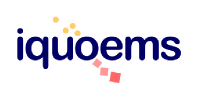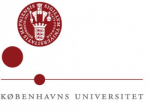AALTO description
AALTO is the oldest university of technology in Finland. The Otaniemi campus area around AALTO is a unique concentration of high technology and expertise where, in addition to AALTO, many significant research centres, such as VTT, the Technical Research Centre of Finland. The laboratories of AALTO are involved in nine national Centres of Excellence (CoE) in Research nominated by the Academy of Finland. One of these CoEs is formed by the Low Temperature Laboratory together with the Quantronics group of VTT Information Technology and two research groups of the Department of Applied Physics. Over the past 20 years, the Low Temperature Laboratory (LTL) of the Helsinki University of Technology (HUT) has been one of the world centers in ultralow temperature physics. Since 1994, the LTL has served as a European Large Scale Facility (LSF) in low temperature physics research, serving close to 100 European scientists during the first contract period. At present, LTL houses six experimental research groups (four in nanophysics) and one theory group. The groups are utilizing and developing the national infrastructure CRYOHALL (http://ltl.tkk.fi/wiki/CRYOHALL).
The main facilities of the Helsinki-team include an in-house 100 m2 clean room of class 1000/10000, fully furnished to perform e-beam lithography and multiple-angle (2-4) shadow evaporation down to line widths of ~ 80 nm using a Nabity pattern generation system on a 40 keV JEOL 6400 SEM. For advanced e-beam lithography and focused ion beam patterning the group has access to a top-of-the-line on-campus clean room at Micronova (http://www.micronova.fi/). For low temperature experiments, the Helsinki-team operates one plastic dilution refrigerators cooling down to 40 mK, and two powerful dilution refrigerators (10 mK base temperature), rigged with high frequency coaxial cables and home-made/commercial (LNF, Caltech) cooled microwave preamplifiers (HEMTs and SQUIDs). The high frequency measurement equipment include several network, spectrum and signal analyzer (range 6-40 GHz), as well signal and pattern generators for various microwave needs. Furthermore, there are dozens of microwave amplifiers (0.5 – 20 GHz). and back-action-preventing circulators that work at mK-temperatures for frequency bands 0.6 – 0.9 GHz, 2.5 – 3.5, and 4 – 8 GHz (about four of each).
Prof. Pertti Hakonen is a specialist of high frequency (GHz) measurement techniques at low temperatures. He has applied these methods for electrical transport studies of high impedance samples in graphene and in circuit QED settings. Moreover, he has experience on ultra low-noise measurements, like record-sensitive radio-frequency single electron devices, on the development of new quantum amplifiers, and on read-out of nanomechanical resonators. Recent publications can be found at http://ltl.tkk.fi/wiki/LT/Nano_Group/Publications. His NANO group is a member team in the Center of Excellence “Low Temperature Quantum Phenomena and Devices” (http://ltl.tkk.fi/wiki/CoE) of the Academy of Finland.
The NANO-group works in microwave optomechanics in close collaboration with the research team Quantum NEMS of Prof. Mika Sillanpää at Aalto University. The research groups run jointly a semi-clean room where a full lithography line without unnecessary restriction is operated (suitable for unconventional processes). The NANO and Quantum NEMS groups have recently seen coherent transfer between photons and phonons at microwave frequencies (ArXiv:1207.1637v1).
Dr Xuefeng Song, a postdoctoral researcher of the Academy of Finland, is a specialist of nanotube/graphene electrical transport and mechanical graphene resonators. He has developed a method to transfer suspended graphene accurately onto chips with prepatterned circuit QED devices (Nano Lett. 12, 198-202 (2012)). These techniques have been applied to observe thermal motion of a graphene resonator at mK-temperatures.







